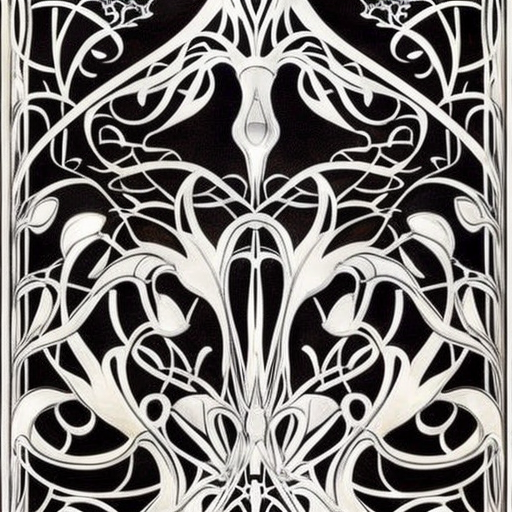Summary:
Art Nouveau was an influential art movement that emerged in the late 19th century and flourished until the early 20th century. It was characterized by its emphasis on organic forms, intricate designs, and a desire to integrate art into everyday life. Art Nouveau encompassed various art forms, including architecture, furniture, jewelry, and graphic design. The movement was a reaction against the industrialization of society and sought to create a new aesthetic that celebrated nature and craftsmanship.
Origins and Influences:
Art Nouveau originated in Europe, particularly in Belgium and France, during the late 19th century. It was influenced by various artistic and philosophical movements, including the Arts and Crafts movement, Symbolism, and Japonism. The movement drew inspiration from nature, incorporating elements such as flowers, plants, and animals into its designs. The curved lines and asymmetrical compositions of Art Nouveau were a departure from the rigid and symmetrical styles of the previous era.
Characteristics:
Art Nouveau was characterized by its emphasis on organic forms and the integration of art into everyday life. It sought to create a total work of art, where every element of a design, from architecture to furniture to decorative objects, was harmoniously unified. The movement favored intricate and ornamental designs, often featuring sinuous lines, flowing curves, and motifs inspired by nature. Common themes included flowers, vines, insects, and mythical creatures.
Architecture:
Art Nouveau architecture was characterized by its use of decorative elements and innovative materials. Buildings often featured elaborate facades adorned with intricate ironwork, stained glass windows, and mosaic tiles. The style emphasized the integration of nature into the design, with buildings often incorporating organic motifs and natural materials such as stone and wood. Some notable examples of Art Nouveau architecture include the Hôtel Tassel in Brussels and the Casa Batlló in Barcelona.
Furniture and Decorative Arts:
Art Nouveau had a significant impact on furniture and decorative arts. Furniture designers embraced the use of curved lines and organic forms, creating pieces that were both functional and visually striking. The movement also influenced the design of decorative objects such as lamps, vases, and jewelry. René Lalique, a prominent Art Nouveau jewelry designer, incorporated natural motifs and innovative materials, such as glass and enamel, into his designs.
Graphic Design:
Art Nouveau had a profound influence on graphic design and illustration. Posters, book covers, and advertisements from this period often featured intricate and decorative designs, with flowing lines and vibrant colors. Artists such as Alphonse Mucha and Aubrey Beardsley were known for their distinctive Art Nouveau style, which combined elegance with a sense of fantasy and sensuality.
Legacy:
Art Nouveau had a lasting impact on the development of modern art and design. Its emphasis on organic forms, innovative materials, and the integration of art into everyday life paved the way for later movements such as Art Deco and the Bauhaus. The movement’s influence can still be seen in contemporary design, with many artists and designers drawing inspiration from its ornamental and nature-inspired aesthetic.
In conclusion, Art Nouveau was a significant art movement that emerged in the late 19th century and sought to create a new aesthetic that celebrated nature and craftsmanship. It encompassed various art forms, including architecture, furniture, jewelry, and graphic design. Art Nouveau’s emphasis on organic forms, intricate designs, and the integration of art into everyday life had a lasting impact on the development of modern art and design.












